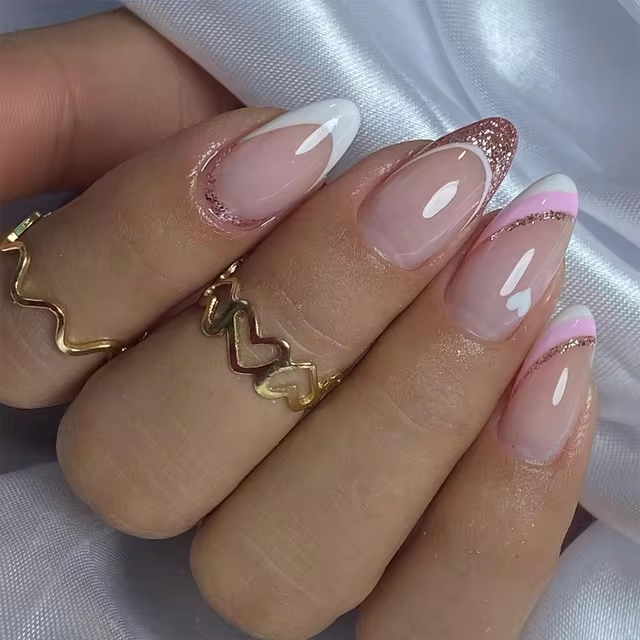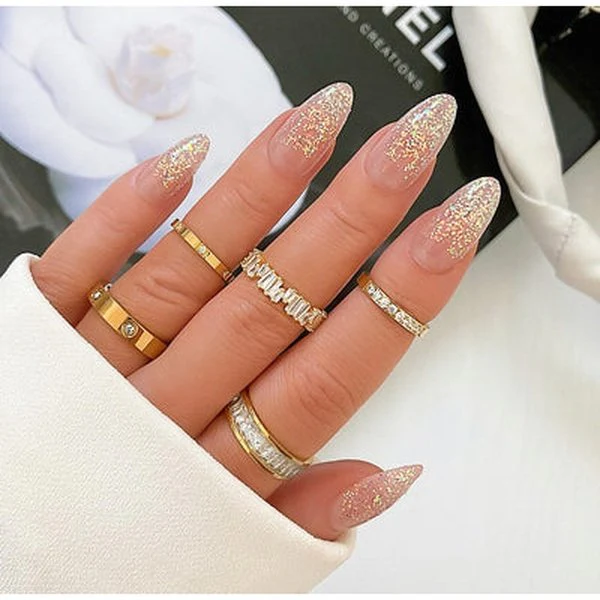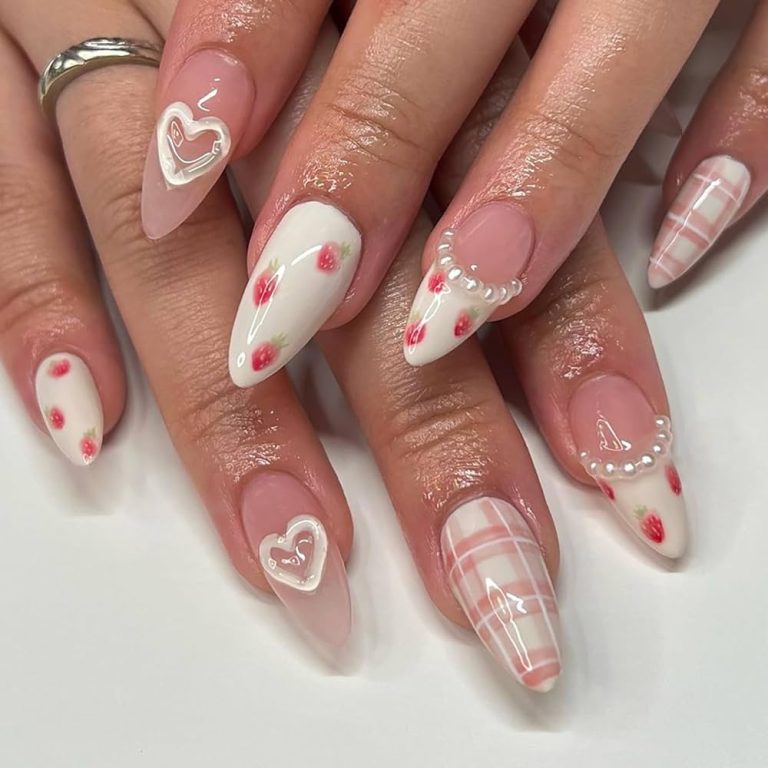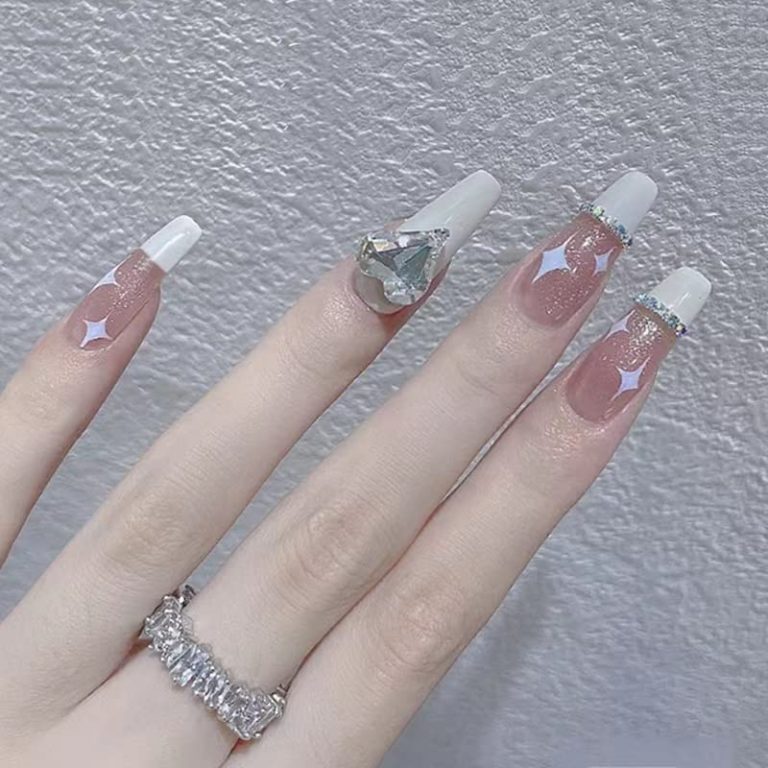
Quicken Dip Nail Removal: Acetone Soak Times
Introduction to Dip Nails and Their Removal Challenges
Dip powder nails, known for their durability, present removal challenges compared to traditional nail polish. How long to soak dip nails in acetone?The strong bond between the powder and the nail bed, while perfect for longevity, often requires patience and care during removal to avoid damage to natural nails.
Manicure enthusiasts adore dip nails for their long-lasting wear. Yet, when it’s time for a change, many wonder about the best way to remove them without harming their nails. This often leads to the question: how long to soak dip nails in acetone?
The removal process for dip nails typically involves soaking in acetone. But there is no one-size-fits-all soak time. Nails can vary in their resistance to solvents. Factors like the dip powder’s thickness and how long the manicure has been on can affect the duration of acetone soaking.
Understanding how to navigate these challenges will make the dip nail removal process smoother and healthier for your nails. Let’s explore the tools needed, the step-by-step soaking method, and tips for caring for your nails post-removal.

Essential Tools for Dip Nail Removal
To remove dip nails effectively, gather these essential tools before you start. These tools will help streamline the process, ensuring a safe and efficient removal. How long to soak dip nails in acetone?Here is a comprehensive list of what you’ll need:
- Acetone: This is the primary solvent used for breaking down dip powder. Opt for 100% pure acetone for best results.
- Cotton Balls or Pads: Essential for applying acetone directly to the nails.
- Aluminum Foil: Used to wrap the cotton balls or pads around your nails, keeping the acetone in place.
- Nail File: A coarse-grit file is crucial for buffing away the shiny top layer of the dip powder, enhancing acetone penetration.
- Orangewood Stick or Metal Cuticle Pusher: Helps in gently scraping off softened dip powder after soaking.
- Petroleum Jelly: Applied around the skin surrounding nails to protect from the drying effects of acetone.
- Gloves: Optional but recommended to protect your hands during the soaking process.
- Timer: Helps track acetone soak times, ensuring you don’t over-soak your nails which can lead to damage.
Gathering these tools beforehand streamlines the removal process and safeguards your nails and skin from potential damage.

Step-by-Step Guide to Acetone Soaking Method
Removing dip nails with acetone involves several key steps. How long to soak dip nails in acetone?Follow this guide to ensure a safe and effective removal process.
First, prep your workspace and gather all required tools. Work in a well-ventilated area to avoid inhaling fumes.
Begin by filing down the shiny topcoat of your dip nails. Use a coarse-grit nail file to do this. Don’t file too hard; just remove the gloss.
Next, protect the skin around your nails. Apply a thin layer of petroleum jelly to the areas surrounding your nails to guard against dryness.
Now, soak your cotton balls or pads in pure acetone. Fully saturate them for best results. Place a soaked cotton ball on each nail.
Take strips of aluminum foil and wrap them around your nails. This keeps the acetone-soaked cotton in contact with the nail. Secure the foil but don’t wrap it too tight.
Set your timer for the recommended soak time. This usually ranges from 15 to 20 minutes, but it can vary. Be patient and don’t rush the process.
After soaking, check if the dip powder is lifting. Gently press the cotton against the nail. If the powder is not budging, re-soak for a few more minutes.
Once the dip powder begins to lift, gently scrape it off. Use an orangewood stick or metal cuticle pusher to do this with care.
Finish by washing your hands thoroughly. You want to remove all traces of acetone from your skin and nails.
Remember, acetone can be drying. After removal, apply cuticle oil and hand cream to moisturize.
Tips for Effectively Reducing Acetone Soak Times
To cut down on the time you spend soaking your dip nails in acetone, consider the following tips. How long to soak dip nails in acetone?By using these strategies, the acetone can work faster, potentially reducing the overall soak time and minimizing the exposure of your nails and skin to this potent solvent.
- File Correctly: Thoroughly buff the surface of your dip powder nails to remove the shiny top layer. A coarse-grit nail file works best for this step. Aim to remove just enough of the sealant to allow the acetone to penetrate quickly.
- Heat Things Up: Slightly warm the acetone before use. Dip a small bottle of acetone into warm water for a few minutes. Check its temperature to ensure comfort. Never microwave acetone, as it is flammable and poses a hazard when heated.
- Optimize Acetone Contact: Ensure the acetone-soaked cotton ball fully covers the nail. Wrap the foil snugly to prevent the acetone from evaporating. This maximizes the solvent’s contact with the dip powder.
- Use a Timer: Set a timer for your soak. Start with the minimum suggested time to avoid over-soaking. Check the progress and add more time in small increments if necessary.
- Employ the Power of Steam: Consider using a heat source, like placing your hands over a bowl of warm water, or covering them with a towel that’s been warmed up, to help accelerate the breakdown of the powder. Again, always monitor the heat to avoid discomfort.
By applying these tips, you can make the dip nail removal process faster and safer. Remember to follow all safety precautions and give your nails plenty of care afterwards with a nourishing hand cream and cuticle oil.

Non-Acetone Methods for Dip Nail Removal
If you prefer to avoid acetone, there are alternative methods to consider for removing dip nails. How long to soak dip nails in acetone?These non-acetone methods can be gentler on your skin and nails. Here’s how to remove your dip powder nails without using harsh chemicals:
Use White Vinegar and Lemon Juice
Combine equal parts of white vinegar and lemon juice in a bowl. Soak your nails for about 15-20 minutes. This natural mixture can help break down the dip powder. After soaking, gently scrub the nails with a nail brush or a toothbrush to remove the residue.
Try Alcohol-Based Solutions
Rubbing alcohol can be an alternative to acetone, although it might be less effective and require a longer soak time. Soak a cotton ball with rubbing alcohol and apply it to your nails. Cover with foil and wait for about 20-30 minutes. Check intermittently, and gently scrape off the dip powder as it softens.
Employ Baking Soda Paste
Mix baking soda with a bit of water to create a paste. Apply this paste over your nails and let it sit for 15-20 minutes. Use a nail brush to scrub off the dip powder gently. This method may need repetition for complete removal.
Hot Water Soak
Soak your nails in hot water for 20-30 minutes. The heat helps to loosen the dip powder. However, it can be less effective alone. For better results, combine this with any of the other non-acetone methods mentioned.
These non-acetone methods offer alternatives to those sensitive to acetone or who prefer a more natural approach. Always follow up with a moisturizer or cuticle oil to keep your nails and skin hydrated.
Post-Removal Nail Care Tips
After you’ve removed your dip nails, it’s essential to take certain steps to ensure your nails remain healthy and strong. Here are a few post-removal nail care tips to follow:
- Hydrate Your Nails: Your nails may be dry after exposure to acetone. Use cuticle oil to rehydrate them. Applying it daily can help restore moisture.
- Moisturize Your Skin: Don’t forget to take care of the skin around your nails. Apply hand cream to soothe and protect your skin from dryness.
- Give Nails a Break: Wait a few days before your next manicure. This gives your nails time to recover from any stress caused by the removal process.
- Trim and File: If there are any rough edges or splits, gently trim and file your nails. Make sure to use a fine-grit nail file to avoid further damage.
- Strengthen Your Nails: Consider using a nail strengthener to help repair any damage from the dip powder or acetone. Look for products containing nourishing ingredients like keratin or biotin.
- Be Gentle: Avoid rough activities that could harm your bare nails. If you must do chores, consider wearing gloves to protect them.
- Eat Nail-Friendly Foods: Your diet can affect nail health. Eat foods rich in protein, vitamin E, and calcium to promote strong nails.
By following these tips, you can maintain the health of your nails and keep them looking great after removing dip powder nails. Remember that nail care should be a continuous routine, not just a post-removal practice.

Safety Precautions When Using Acetone
When using acetone to remove dip nails, safety is key. Here are crucial precautions:
- Work in a Ventilated Area: Always use acetone in a space with good airflow. Open windows or use a fan.
- Protect Your Skin: Acetone can dry and irritate skin. Apply petroleum jelly around your nails to shield your skin.
- Avoid Heat: Never warm acetone in a microwave or on a stove. It is highly flammable.
- Use Appropriate Containers: Only use glass or metal bowls for acetone. They are safe and don’t react with the chemical.
- Wear Gloves: Consider wearing gloves to protect your hands from prolonged acetone exposure.
- Be Careful with Fumes: Acetone fumes can be harmful. Don’t breathe them in directly for too long.
- Store Safely: Keep acetone in a cool, dry place away from direct sunlight and heat sources.
Following these safety steps helps prevent accidents and protect your health while removing dip nails.
Pros and Cons: Acetone Soak vs. Other Removal Methods
Removing dip nails often involves an acetone soak. But other methods exist too. Let’s compare the pros and cons of each.
Pros of Acetone Soak
- Effective Removal: Acetone breaks down dip powder fast.
- Widely Used: Most salons use acetone, so it’s a tried method.
- Quick Action: It can remove dip nails in 15-20 minutes.
Cons of Acetone Soak
- Skin Dryness: Acetone can make skin around nails dry.
- Fumes: Breathing in acetone fumes is bad for health.
- Flammability: Acetone is highly flammable and must be used with care.
Pros of Non-Acetone Methods
- Gentler on Skin: They don’t dry out skin like acetone.
- Safer Use: Non-flammable and fewer health risks.
- Natural Options: Some methods use everyday household items.
Cons of Non-Acetone Methods
- Less Effective: They usually take longer to work than acetone.
- Repeated Application: You might have to apply them more.
- Less Convenient: These methods may require unusual mixes or preparations.
Whether you select acetone or a non-acetone method, always protect your skin and nails. Use oils and creams after to keep nails healthy. Consider each method’s pros and cons. Decide on what works best for you.

